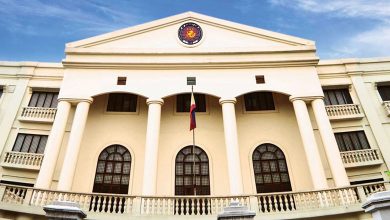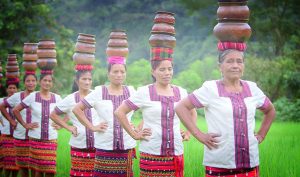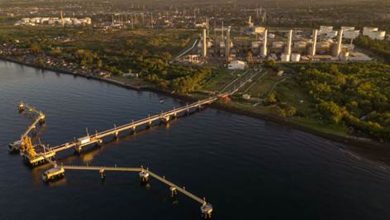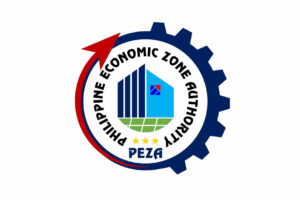Two case studies of professional sports leagues
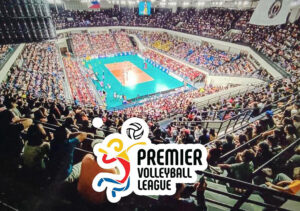
Many Filipino boys dream of becoming a Philippine Basketball Association (PBA) player. Entry salary in the PBA is P300,000 a month, regardless of whether the fresh recruit is a degree holder or a college dropout. No Philippine sport offers a similar opportunity.
In the last five years, two professional sports leagues have been established. I have my thoughts about their capacity to attain the same stature of the PBA, but like the case-method professor I have been, I will leave it to you reader to draw your own conclusion. Here are the Philippine Football League and the Premier Volleyball League.
PHILIPPINE FOOTBALL LEAGUEIn 2016, the Philippine Football Federation (PFF), the local governing body for football recognized by the Federation Internationale de Football Association (FIFA), officially announced the formation of the Philippine Football League (PFL) with Ilocos United, Stallion Laguna, JPV Marikina, Kaya FC-Makati, FC Meralco Manila, Ceres Negros, Global Cebu, and Davao Aguilas as the participating clubs. Their rosters can include four foreigners. Games would be played on a home-and-away basis. PFL’s inaugural season would as staged in 2017 with People’s Television Network to cover the games held in Metro Manila.
In April 2017, PFF president Ramon Araneta expressed concerns about the PFL’s operations. He said, “The challenge is really logistics because it is home-and-away. You have to spend for the movement of the players and match officials.” Tony Lazaro, co-owner of the Ilocos United club, observed, “The league is a bit ambitious. Traveling between Vigan and Davao for matches could take 14 hours. It’s probably one of the longest travel times in domestic football all over the world.”
In January 2018, Meralco Manila released this statement: “It is with a heavy heart that we announce that the club will be ceasing operations immediately and will no longer participate in the second season of the league. Circumstances beyond our control have made it difficult for FC Meralco Manila to continue. The board and management have tried to arrange for new investors that could keep the organization running but these efforts have sadly fallen short.”
Ilocos United also withdrew from the league for the same reason. Kaya Makati relocated to Iloilo City that year. At the end of the 2018 season. Davao Aguilas also bade goodbye.
PFL player James Younghusband intimated, “Improvements are still needed including having the needed facilities.” His brother Phil added, “Marketing and organizational improvements have to be addressed.”
Eleven clubs have played in the PFL since its inception in 2017, but only United City (formerly Ceres-Negros), Kaya-Iloilo, and Stallion Laguna of the pioneer clubs are competing in 2023.
The PFL is the replacement of the United Football League. In 2009 aficionados of football and former collegiate and commercial league football players linked up to organize Metro Manila-based football clubs into a league. With assistance from the Football Alliance and the United Football Clubs Association, the United Football League (UFL), officially named then as LBC United Football League for sponsorship reasons, and billed as the premier football league in the country by its organizers, held its inaugural season in 2010.
The founding teams were Diliman, Global, Green Archers United, Kaya, Loyola Agila, Mama Africa, Manila All-Japan, Manila Lions, Manila Nomads, Mendiola United, Philippine Air Force, Philippine Army, Philippine Navy, Sunken Garden United, Union International, and United South.
At the end of that first season, the league signed a P150-million five-year contract with AKTV. After the end of that 2011 season, seven new clubs also entered the league.
Beginning the 2013 season, the $1-million artificial pitch football field in McKinley Hill, Bonifacio Global City became the new home field of the league. That year the UFL started charging admission. The league decided to start selling match tickets to give more value to the games.
In October 2016, it was reported that the 2016 season would be the last UFL season. The PFF announced that it prefers to have a nationwide, community-based football league that is at par with the standards set by FIFA and the Asian Football Confederation. The UFL could not be considered a national league as all its members were Metro Manila based.
PREMIER VOLLEYBALL LEAGUEIn October 2020, the Games and Amusements Board (GAB), the government body regulating professional sports, issued a directive that players compensated for non-national team play would be considered as professionals, as well as all sporting events organized for profit. At that time, the Premier Volleyball League (PVL), an association composed of women’s volleyball teams, was considered a semi-professional league. As such it was not regulated by the GAB.
The following month, the PVL, confident that it had enough women players, announced that it would turn professional starting with the 2021 season. The league had been considering the move for some time in anticipation of the time when the University Athletic Association of the Philippines (UAAP) would ban all college players from playing in the PVL. The UAAP had already barred its rookies from playing in commercial leagues starting in the 2018-2019 season.
Six PVL teams — BaliPure, Banko Perlas, Choco Mucho, Creamline, Motolite, and Petro Gazz — agreed to the move of the PVL turning professional. Prior to the start of the 2021 season, five teams from PVL’s rival Philippine Super Liga — Cherry Tiggo, Cignal, F2 Logistics, PLDT, and Sta. Lucia — joined the PVL.
The Philippine Army is a participant in the ongoing All-Filipino Conference. The roster includes Angela Nunag, Christine Agno, Nerissa Bautista, Mary Ann Esguerra, Christine Diane Francisco, Sarah Jane Gonzales, Andrea Marzan, Audrey Kathryn Paran, Ivy Jisel Perez, Lutgarda Maluluan, Royce Tubino, and Jeannette Virginia Villareal. They are known professionals as they all had played for commercial teams before.
I was told by an owner of a PVL club that the average salary of the star players is P100,000 to P120,000 a month. He believes the superstars may be getting as much as P200,000 a month.
There are questions about the compensation of the Army players. Does the payroll of the Philippine Army include salaries for professional volleyball players? Are those salaries in accordance with standards for their military rank? Do the volleyball players have military responsibilities? Do they participate in military exercises? If they are paid by the Club’s sponsor, the energy drink Black Mamba, are they receiving double compensation? If they are paid exclusively by Black Mamba, why do they represent the Philippine Army?
The All-Filipino Conference of the 2023 season is ongoing. Games are staged at the Filoil EcoOil Center in San Juan and PhilSports Arena in Pasig. To accommodate larger numbers of spectators as when contenders or popular teams play, games are held at the Mall of Asia Arena and Smart Arena Coliseum in Quezon City.
The game between sister teams Creamline and Choco Mucho at Smart Araneta on Feb. 14, a Tuesday, drew 19,000 spectators, about the same as the previous Sunday’s game between sister basketball teams Magnolia and Ginebra at the same venue.
One Sport of Cignal TV covers the games. When Philippine Basketball Association games are played at the same time, the PVL games are telecast live and the PBA games are shown on a delayed basis, starting at about 9 p.m.
The PVL had its start in 2004 when Sports Vision Management Group, in cooperation with Shakey’s Pizza, formed the Shakey’s V-League, a league composed of the women’s volleyball teams of schools in Metro Manila. Prior to that, the highest level of volleyball was the UAAP women’s collegiate tournament.
The league from its founding allowed the teams to have a maximum of two reinforcements — termed as “guest players” — on their roster. These guest players ranged from alumnae of their alma mater, other varsity graduates, high school recruits who used the ongoing tournament as preparation for the upcoming collegiate season, and foreign imports.
In 2011, the 2nd Conference was renamed the Shakey’s V-League Open Conference as it was opened to non-school teams — the Philippine Army, Philippine Navy, Philippine Air Force, and Maynilad. The games were aired by GMA TV until 2016. ABS-CBN Sports took over in 2017.
The Shakey’s V-League changed its name to the Premier Volleyball League (PVL) starting the 2017 season as part of a bid to secure more sponsorship for the league.
Oscar P. Lagman, Jr. is a retired corporate executive, business consultant, and management professor.
